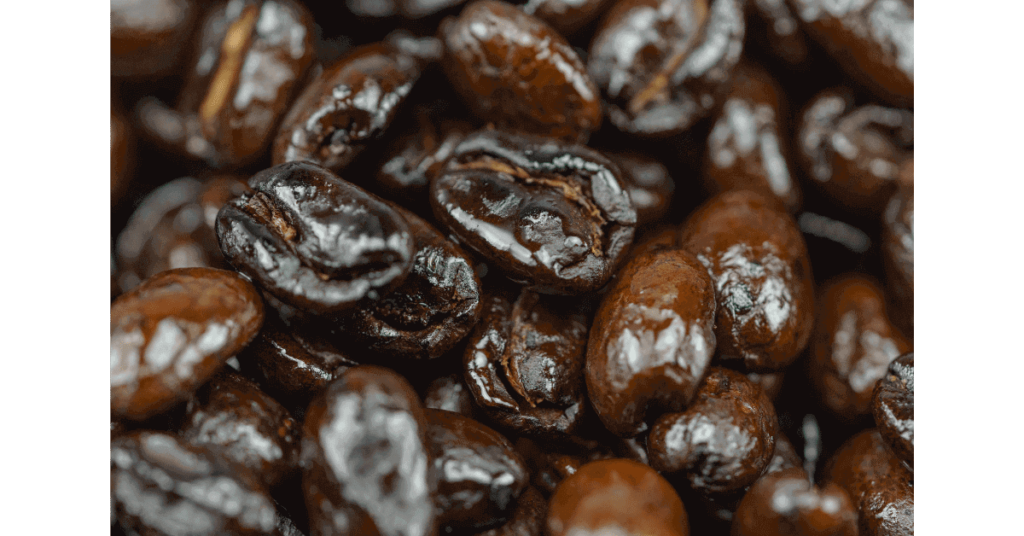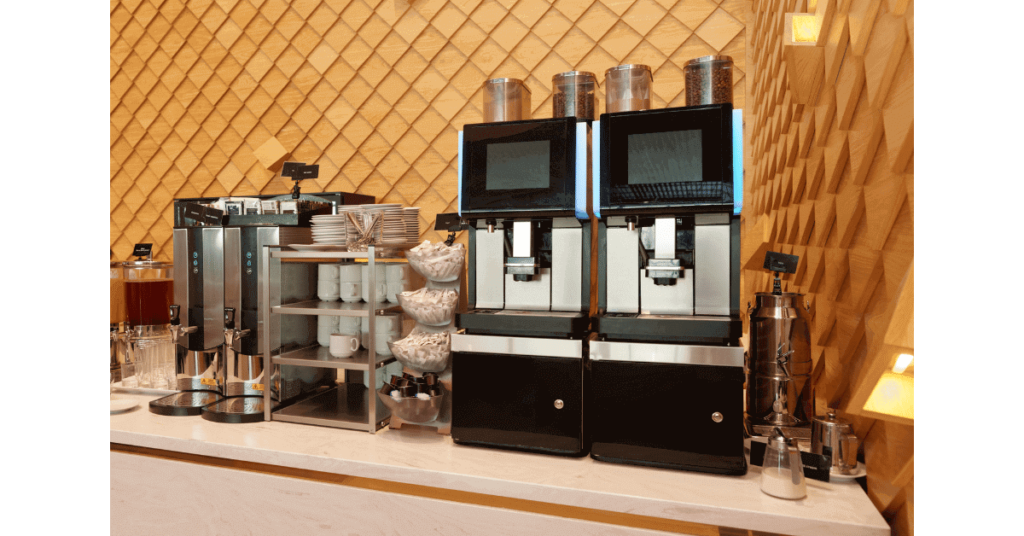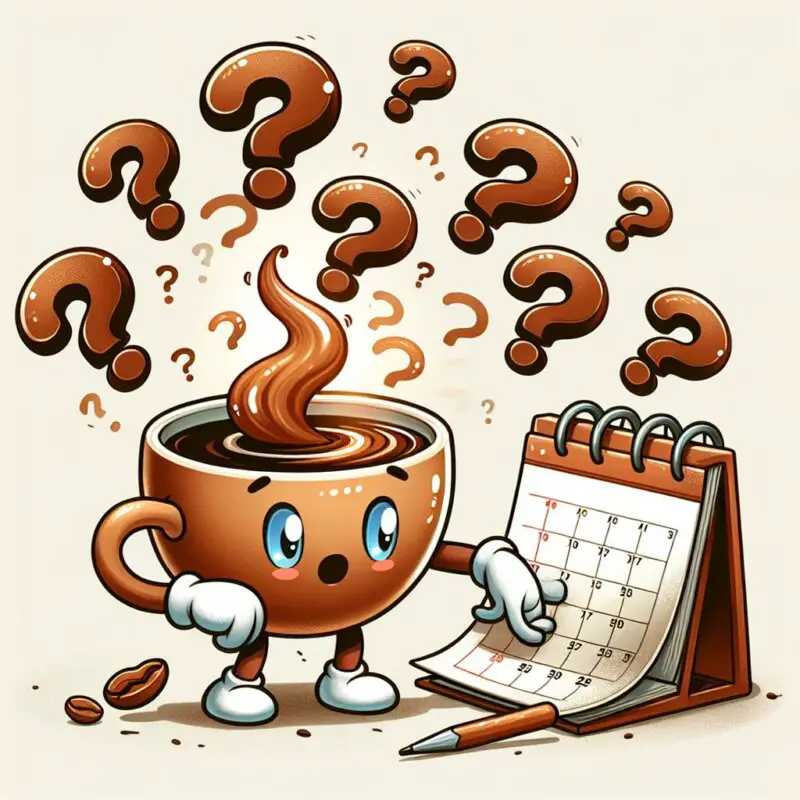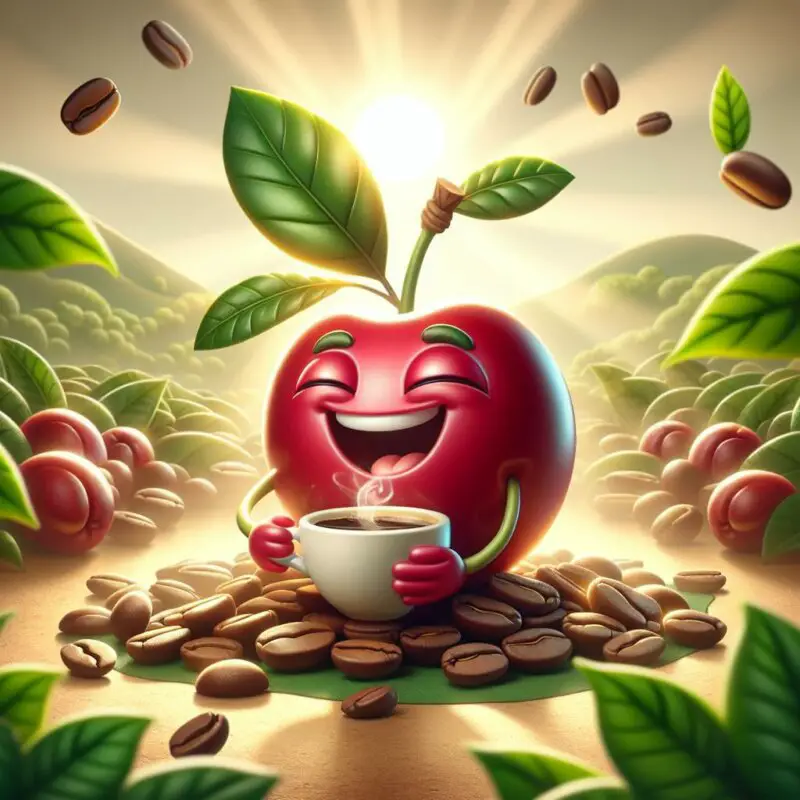This post may contain affiliate links. Please read my disclosure for more info.
See that shiny oil on your beans? It’s normal, but is it actually good for your coffee?
Today, we’re diving into the world of oily coffee beans. Why do they get oily? Should you worry? Plus, we’ll explore which coffee gadgets work best with these slick beans. Stay tuned!
Why Are Some Coffee Beans Oily?
Discover the magic of roasting! All coffee beans begin green, but as they dry in the first roasting phase, they transform into a vibrant yellow.

Next, they turn brown thanks to the Maillard reaction. It’s the same magic that makes toasted bread, seared steak, and marshmallows taste so good and look golden!
At last, coffee beans hit a milestone called the first crack. This moment is when gases and oils trapped inside burst out, giving beans their oily sheen. But it doesn’t end there. The roast level plays a huge role in how oily your beans will be.
Light and medium roast coffee beans aren’t oily. But, as beans roast longer and turn darker, oils start to seep out and coat the surface. This gives dark roast beans a shiny, oily look. It’s fascinating how roasting changes the beans!
Wondering why your coffee looks oily? It’s likely because of the roast level. Chances are, you’ve picked up a darker roast than what you’re normally used to.
Are Oily Coffee Beans a Problem?

It’s totally normal for coffee beans, especially the dark roasted ones, to release oils during roasting. Even medium roast beans might surprise you with a slight oily sheen. You’ll probably only spot this when you pick them up and take a closer look!
Even after roasting, coffee beans keep releasing oils. When you find a medium or light roast looking shiny with oil, it’s time to double-check. Look at the roast date and give it a good sniff. Too much oil for its roast type might mean your coffee beans are not fresh. Freshness matters for that perfect cup, so keep an eye on those oils!
Indeed, while light and medium roast coffee beans behave one way, dark roasts are a different story. Their oils, which give them a shiny appearance, surface during roasting. Over time, these oils can dry out, making the beans less glossy. So, if you come across dark roast beans that aren’t oily, they might not be fresh. However, not all dark roasts start out oily, so always make sure to check the roast date to ensure you’re getting the freshest beans.
Are oily coffee beans bad for coffee makers?
Oily coffee beans? No problem for most coffee makers. But watch out if you’re using super-automatic espresso machines or coffee makers with a built-in grinder. The oils can clog them, especially those with blade grinders.
For your automatic espresso machine, stick to light, medium, or less oily dark roasts. Why? Oily beans can gunk up the machine’s bean hoppers and grinders, and even block the coffee from flowing smoothly. Keep it clean and your coffee delicious!

Steer clear of blade grinders for oily coffee beans. I always say, when discussing how to grind coffee beans, blade grinders just don’t cut it. The top choice for oily beans, and actually all coffee types, is a burr grinder. Find out why a burr grinder is unbeatable.
Can You Dry Oily Coffee Beans?
Absolutely not! Stripping coffee beans of their natural oils takes away all the delicious flavors, ruining your coffee experience. Those oils in the beans? They’re actually a sign of good quality, especially as beans age. Trying to remove them is pointless. Plus, if you’re using an automatic espresso machine that needs dry beans, simply opt for a lighter roast. It’s a much easier and tastier solution than attempting to dry out oily beans.
What Do Oily Coffee Beans Taste Like?
The shiny oil on coffee beans doesn’t tweak the taste, but it hints at the flavor. Like I said before, darker roasts are oilier. Super dark ones, like French and Italian roasts, are especially glossy. This gives you a clue about their rich flavor.
Darker roasts pack a punch with their bold flavors, but they trade in some sweetness along the way. Why? Because the longer roasting time reduces the sugar content. So, if you’re after the sweet, fruity, and complex notes, lighter roasts might be more your style. Dark roasts blur the unique tastes from where they’re grown, but they’re a favorite for making a rich espresso and similar intense brews.
Surprisingly, darker roasted coffee has less caffeine than lighter roasts. Many people think the strong taste of dark roast means more caffeine, but it’s not true. The intense flavor comes from the beans being roasted longer, which actually reduces their caffeine content compared to when they were lighter or medium-roasted beans.
A Few Final Words
Seeing shiny, oily spots on your dark-roasted coffee beans? No stress! This is totally normal, especially if you’re not using an automatic espresso machine. Fans of deep, dark roasts, get ready to embrace the oiliness. But, if your lighter or medium roast beans are looking greasy, it might be a hint that they’re not as fresh as they should be.
Coffee beans have natural oils that add to their flavor. But, if you don’t like those oils on your hands and gear, there’s a simple fix. Try a lighter roast next time you brew a cup. It’s that easy!




